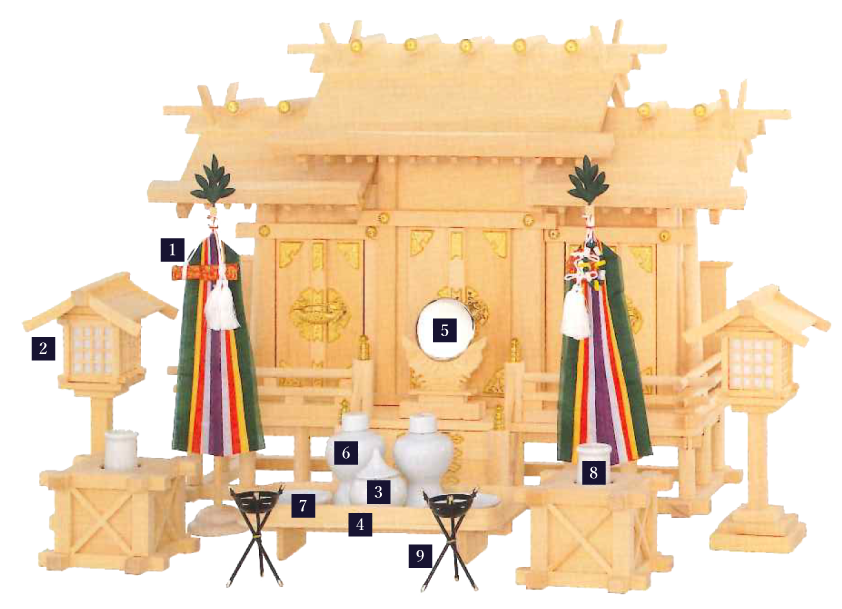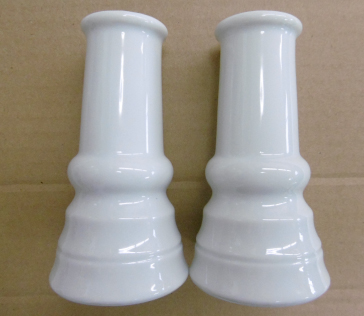Shinden (Shrine) for home and ancestors
Name of Shinden parts
For Shinden, rice, sake, salt and water to be prepared for a basic offering, and food from sea, river, hills and valleys are also prepared additionally.
The order of offerings is rice, sake, fish, vegetables, fruit, salt and water, and please arrange in order from right to centre, then left which is the same as the order of Shinza (place where there is a god or spirit).
It is fine to serve as an assortment in a small Shinden.
It would be nice to use the offerings later with every family member little by little.

-
1Masakaki
The ancient times, historical event “Ihotsu-Masakaki originated in a stone cave, it is based on the historical facts of Kannatsu-sohime (royal family) and Isoji, described in the Keikōki and Chūaiki. It has decorative origins, in front of a shrine at Jinja-saishiki ((Rules for Ritual Procedure at Shrines) in 1875 (Meiji 8)) following the enthronement ceremony for the Emperor Meiji. In other words, that is established on the right or left side of the palace or festival hall. (facing toward the right is Sakaki with a ball, a mirror and five coloured silk, and to the left is a sword and five coloured silk.)
2Tōrō (garden lantern)
It is a tool to light a lamp. It is made of plain wood and mainly for the palace/lord. Tōrō has variety of types depending on the materials, and it changes style depending on times/era.
3Suiki-Mizutama
It is pronounced as Suiki, and used to be called “Masu” or “Wan”. It has been used for filling water mainly since ancient times. At present, unglazed earthenware or white china are used.
4Sanpō
It is pronounced as Sanpō. It was named after the design which has holes in three directions on a wooden stand under the tray. It was previously used for tableware with Shihō, posterity Sanpō has been used for Shintō rituals. It is manly used for placing Udon. In addition, there are three other types of Sanpō. One has a low wooden stand, one is narrow, and another is painted red or black.
-
5Shinkyō
The mirror is positioned facing front with a sculpture of waves and clouds on the stand.
6Heiji
It is named as Heiji or Heishi. At present, it is made of unglazed earthenware or white china and has a lid. It is placed as a pair on sanpō or a lacquered wooden tray for offerings.
7Hiraka・Kawarake
It has been widely used as a plate for rice and salt since ancient times. At present, unglazed earthenware or white china is commonly used.
8Sakaki-tate
It has been used as a stand (vase) for Sakaki. At present, unglazed earthenware or white china is commonly used.
9Kagaribi
It is generally called “kagari”. It is known as Kagari in the Manyoushu, however it is called Kagaribi in the book Izen no Kuni Fudoki. Kagari is used for public affairs, Shinto ritual, guarding, fishing and hunting and both inside and outside lighting at night.



